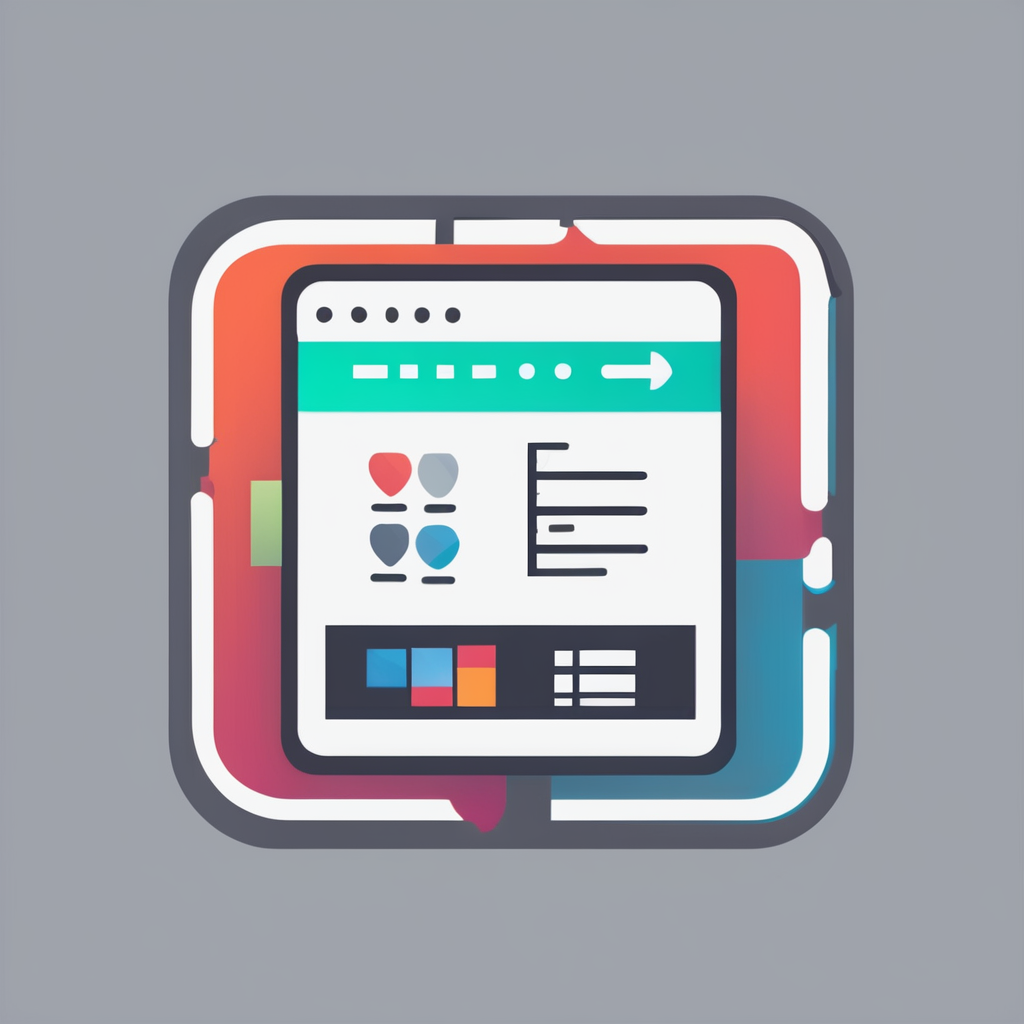Creating exceptional website mockups demands more than basic design skills; it requires a clear process, smart use of design principles, and the right tools. Mastering these elements ensures your mockups not only look professional but also enhance user experience. Learn how to streamline your workflow, avoid common pitfalls, and craft standout designs that truly communicate your website’s purpose. This approach transforms mockup creation from a daunting task into an efficient, creative journey.
Essential steps for professional website mockup creation
Creating web design mockups begins with meticulous planning and gathering all project requirements. This crucial first step ensures that the design aligns perfectly with the client’s goals, target audience, and brand identity. Understanding these factors sets the foundation for effective step-by-step web mockups, avoiding costly revisions later in the process.
Additional reading : Step-by-Step Guide to Setting Up a Secure SFTP Server with ProFTPD on CentOS
Next, structuring content strategically through wireframes is vital. Wireframes act as blueprints, outlining the placement of elements like navigation, images, and text without focusing on visual styles. This clarity helps visualize user flow and content hierarchy early on, making the website mockup process more efficient and purposeful.
Finally, the transition from wireframes to detailed website mockups involves adding design elements such as color schemes, typography, and interactive features. This stage brings life to the layout, allowing stakeholders to experience a near-final representation of the website. Using tools that streamline this translation enhances precision and collaboration, ensuring the mockups meet both aesthetic and functional objectives.
In the same genre : Mastering Real-Time Analytics: A Step-by-Step Guide to Building Your Platform with Google BigQuery and Data Studio
To refine your designs further, consider using tools that let you visualize your design in seconds using a website mockup from Mediamodifier. This can accelerate feedback cycles and improve the overall quality of your web design mockups.
Advanced design principles for standout mockups
When creating creative web mockups, mastering foundational design principles is essential for making your project truly standout. At the core of this process lies the concept of visual hierarchy—the arrangement of design elements in a way that guides users naturally through the interface.
Visual hierarchy is often achieved by balancing size, color, and spacing. Important elements such as headings or call-to-action buttons should be emphasized through larger scale or contrasting colors, while secondary content remains visually subdued. Maintaining this balance prevents clutter and ensures clarity.
Typography also plays a pivotal role in effective mockup design. Choosing readable fonts paired with appropriate sizes creates harmony. Complementing typography with a cohesive color scheme reinforces brand identity while enhancing usability. Colors should not only appeal aesthetically but also maintain accessibility, for example by ensuring sufficient contrast.
Incorporating UI/UX best practices means your mockups don’t just look good but also feel intuitive. This includes prioritizing user journey flow, minimizing cognitive load, and anticipating user needs. By integrating solid UX insights early on, you reduce revisions later and increase the likelihood that the final design will engage users effectively.
For designers aiming to showcase their ideas proficiently, tools designed to visualize your design in seconds using a website mockup from Mediamodifier can accelerate the prototyping phase without sacrificing quality.
In summary, applying these advanced design principles—visual hierarchy, typography, color, and UX insights—ensures that your mockups are not only visually compelling but also functionally robust, elevating any web design project to professional standards.
Recommended tools and software for efficient mockup creation
Choosing the right website mockup tools can significantly improve your design workflow. Popular web design software like Figma, Sketch, and Adobe XD each offer unique features that cater to different project needs. Figma stands out for its cloud-based collaboration, allowing multiple designers to work on a mockup simultaneously and access files from any device. Sketch, favored for its simplicity and powerful vector editing tools, excels in macOS environments and integrates well with third-party plugins. Adobe XD combines ease of use with robust prototyping capabilities, making it ideal for designers who want to quickly turn mockups into interactive presentations.
Using mockup templates and UI kits within these tools can save time and ensure consistency across your designs. Templates provide a pre-designed framework that helps maintain design standards, while UI kits offer pre-built components like buttons and forms, speeding up the creation process. This is especially useful when you need to visualize your design in seconds using a website mockup from Mediamodifier. These resources reduce repetitive work and let you focus on customizing the design to fit your brand.
When selecting web design software, consider your project’s complexity and your team’s workflow. For large teams or remote collaboration, Figma’s real-time features may be the best fit. For Mac users who prefer offline work, Sketch offers a lightweight, efficient solution. Adobe XD strikes a balance between prototyping and design and is suitable for those who require seamless transitions from mockup to prototype. Ultimately, the best tool integrates smoothly with your existing processes and accelerates your project without compromising quality.
Expert workflow tips for faster mockup development
Efficient website mockup workflow hinges on adopting practices that speed up design processes while maintaining quality. One of the most effective methods is setting up reusable components within a design system. By creating standardized buttons, icons, and layout elements, designers can quickly assemble pages without rebuilding from scratch. This not only boosts efficiency but also ensures consistency across the project.
Version control is another vital aspect of a smooth website mockup workflow. Using tools that track changes and enable easy rollbacks prevents lost work and confusion when multiple designers collaborate. Clear naming conventions and organized file structures further reduce time spent searching for assets or previous versions.
Finally, streamlining handoff to developers is crucial for preserving design intent and accelerating project delivery. Including detailed annotations, style guides, and asset organization allows developers to implement the mockups with minimal back-and-forth. Tools that integrate design and code environments facilitate this process, keeping the workflow tight and efficient.
By focusing on reusable components, version control, and effective handoff strategies, teams can significantly enhance the speed and quality of their website mockup workflow. For an immediate boost in creativity and structure, visualize your design in seconds using a website mockup from Mediamodifier.
Common mistakes to avoid during the mockup process
Creating an effective website mockup requires careful attention to mockup best practices to avoid common pitfalls. One major web design mistake is neglecting responsiveness and accessibility considerations. Failing to design for various screen sizes or to accommodate users with disabilities can severely limit the usability of your final site. Ensuring your mockup accounts for different devices and accessibility standards helps prevent costly revisions later.
Another frequent website mockup error is overcomplicating the layout and interactions. While it’s tempting to include numerous features and animations, overwhelming the user detracts from the user experience. Simplifying the structure and keeping interactions intuitive contributes to a cleaner, more effective design.
Lastly, ignoring the feedback and iteration phases is a critical misstep in the process. Web design mistakes often stem from skipping these steps, which are essential for refining and improving the mockup. Soliciting stakeholder and user feedback, then iterating based on that input, drives the design toward success.
By focusing on these key areas, you can create thoughtful, functional mockups that stand up to real-world use. Additionally, to enhance your design workflow and experiment visually, consider using tools that let you visualize your design in seconds using a website mockup from Mediamodifier.
Visual examples and real-world mockup inspiration
Exploring website mockup examples provides a practical way to grasp effective web design. Professional mockups showcase how concepts translate into tangible layouts, offering clear insights into structure, color balance, and user interface flow. High-quality mockups typically excel in visual hierarchy, guiding the visitor’s attention while maintaining brand consistency.
What makes certain mockups truly effective? Precision in layout symmetry, consistent use of typography, and intuitive navigation elements are crucial factors. For example, a mockup that balances whitespace with content density prevents overwhelm and enhances readability, ensuring users find information quickly and effortlessly.
To keep your mockup designs fresh, turn to reliable sources of web design inspiration such as design portfolios, industry blogs, and curated galleries. Regularly reviewing diverse professional mockups expands your creative perspective and aids in spotting emerging trends. For hands-on practice and to quickly visualize your ideas, consider tools that enable you to visualize your design in seconds using a website mockup from Mediamodifier. This resource streamlines the design process and elevates the quality of your presentations by letting you produce polished prototypes with ease.
Incorporating insights from outstanding mockup examples empowers designers to craft projects that resonate with users while maintaining professional polish. Ultimately, staying inspired and analyzing what makes mockups work is key to advancing your web design skills.











